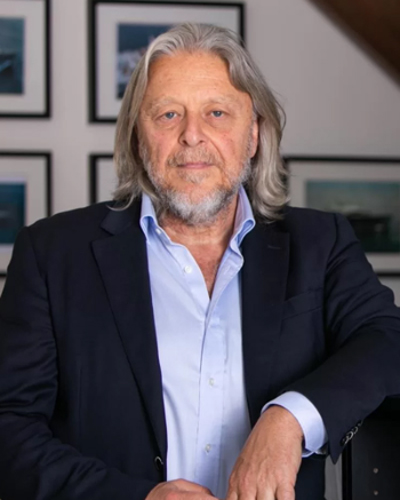
A FOCUS ON TECHNICAL
AND CONSTRUCTION ASPECTS
Sergio Cutolo - Naval Architect & Exterior Designer

Both exterior lines, naval architecture, and engineering have been developed by Sergio Cutolo/Hydro Tec who offers us an overview on the Flexplorer line main technical aspects.
“From a structural point of view, we have tried to minimise the impact of the structures on the hull and superstructures to maximise interior spaces. In the superstructure we have managed to create the perfect match between the designed internal layout and both positioning and size of the windows.
The transverse frame, in line with the shipyard approach, allows for better spaces optimization, increasing internal volume also thanks to the structural arrangement that requires limited space for internal structures.
The hybrid structural arrangement, main longitudinal structures and transversal frames at 500 mm, also provides additional design flexibility, allowing for easier modifications and customization.
A gallery/tank deck runs below the guest area to connect the engine room to the crew area. This technical space also allows easy access to equipment and tanks. Thanks to the hull’s large volume, easily accessible storage compartments and freezers are located below the crew area. The hull was preliminarily optimised using CFD analysis with particular attention to avoid any kind of interference between the various appendages (rudders, stabilizers, thruster, exhaust scoops, etc).
Once the CFD analysis has been completed, the hull has been tank tested at MARIN Institute in Holland.
The naval architectural aspects were influenced by the peculiar weight distribution and the profile of the bow which is designed according to the specific aesthetic needs of the owner.
Hull lines were designed to improve efficiency and to match the weight distribution as well as interior space requirements.
Their hulls are typical fast displacement round bilge hulls, with a bulbous bow and deep and flared in its forward sections to keep the deck dry in all weather conditions, even the worst, and to allow for optimal space for the crew area on the Lower deck forward.
The hull has a generous bulbous arc and flat sections at the stern.
The Beam/Draught ratio has been brought to an optimal value and special arrangements have been made to allow high diameter/high efficiency propellers.
Towards the transom, transversal sections flatten and enlarge astern to allow large diameter propellers without affecting the draught and huge space for beach club and swim platform.
All Flexplorers have two pairs of electro-driven stabilizing fins. This solution, which is not common on vessels of this size, has multiple beneficial effects. First, the four fins arrangement grants, by definition, for better course keeping because they cancel completely the steering effect caused by aft fins. In addition to that, the Flexplorers are equipped with independent electrically driven rudders that, thanks to a sophisticated software, work together with the four stabilizers furtherly improving coursekeeping and, consequently, seakeeping itself.
Compared to two-fins installations, the four-fins installation allow for the installation of smaller machines and blades, offering redundancy in case of blade failure. In practice the experience showed that, during normal operation, the contribution of the aft fins to stabilization is about one third compared to the forward ones, so they be kept almost centered reducing any possibility of turbulence to the propellers. At anchor, the four fins work in synchrony to provide optimal stabilization.
Aurelia, first Flexplorer 130 to be launched, exceeded your expectations regarding performances and range, and I am confident that all three Flexplorer 146 will do the same…
We preferred to be prudent. Data from sea trials exceeded our expectations: the maximum speed has been more than 15 knots, exceeding by more than one knot the contract specifications. The results of the sea trials show an incredible 7.000 nautical miles range at 10 knots, much higher than the contractual values, due to the extremely low fuel consumption which is about 70 l/h at a speed of about 10 knots.
This amazing achievement is the result of the hull optimization combined with the perfect integration between the hull itself and the propulsion package (engines, gearboxes, propellers).”
YOU MAY LIKE
THESE ARTICLES






